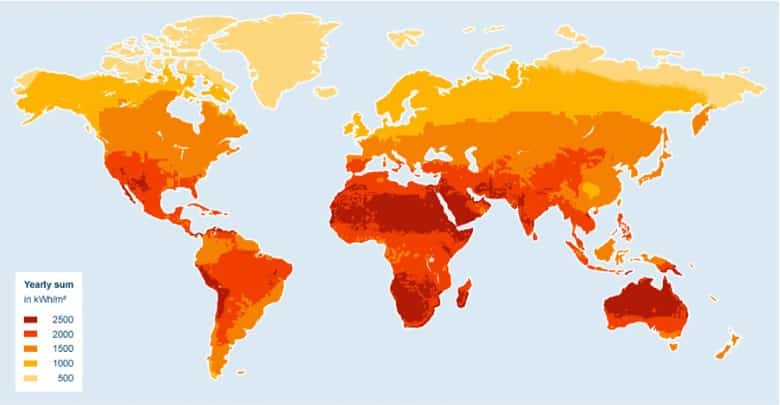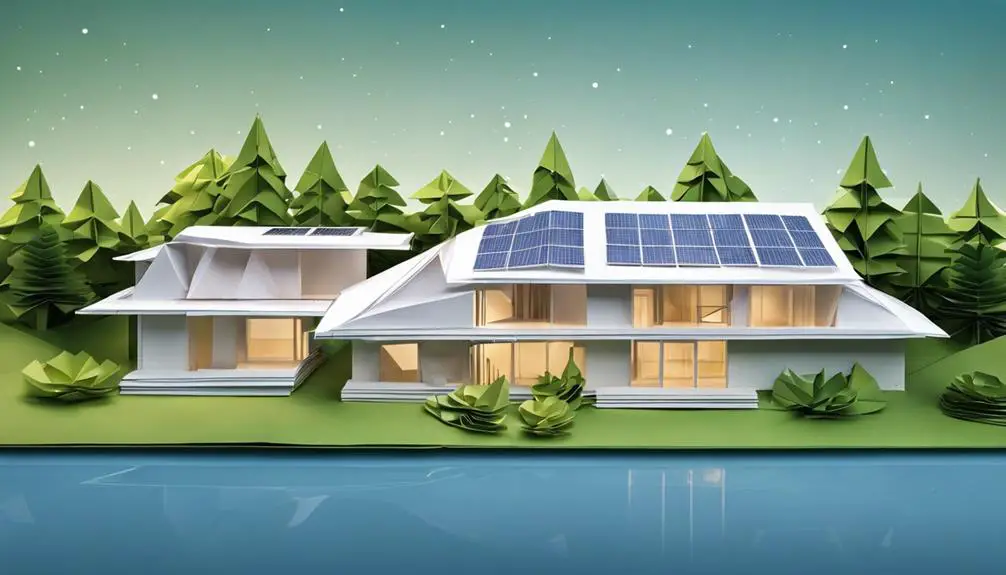Where Is Solar Energy Found
Have you ever wondered where solar energy comes from? Solar power is one of the most abundant and renewable sources of energy on our planet. It is derived directly from sunlight, which can be converted into electricity using photovoltaic cells. But where exactly can we find this source of clean energy?
Solar energy is found in various parts of the world, but it primarily originates from the sun. The sun releases vast amounts of energy every moment through a process called nuclear fusion. This process fuses hydrogen atoms together to form helium and releases an enormous amount of heat and light energy in the process.
This radiation travels across space at incredible speeds until it reaches Earth’s atmosphere, where we can harness its power for our own use. In this article, we will explore different locations around the world that are ideal for generating solar power and how technology has made it possible to capture this precious resource.
The Science Behind Solar Energy
Solar energy is a type of renewable energy source that harnesses the power of sunlight to generate electricity. This technology has made significant strides in recent years, with photovoltaic cells being at the forefront of this progress. These cells are able to convert light into electrical energy, making them an essential component in solar panels.
One real-life example of how effective this technology can be is found in India. The country’s first floating solar power plant was constructed on a lake in Kerala and includes 1,938 solar panels capable of generating up to 500 kilowatts of electricity. This project not only provides clean energy but also helps conserve water by reducing evaporation from the lake.
Renewable sources such as solar energy have become increasingly important due to concerns over climate change and fossil fuel depletion. With advancements in technology, it’s possible for homes and businesses to rely solely on solar power for their electricity needs.
As we continue to explore ways to make sustainable energy more accessible, it’s clear that photovoltaic cells will play a crucial role in powering our future.
Harnessing Sunlight For Electricity
Solar energy is found in sunlight, which can be harnessed to generate electricity. This process involves using solar panels that capture the sun’s rays and convert them into usable electrical power.
Solar panel installation has become increasingly popular as a way to reduce dependence on traditional fossil fuels and decrease carbon emissions.
Once the solar panels have collected energy from the sun, it needs to be stored for later use. This is where solar energy storage comes into play.
Batteries are used to store excess energy generated by the panels during daylight hours, so it can be used when needed at night or during cloudy days. With advancements in battery technology, more efficient and cost-effective options are becoming available.
Overall, harnessing sunlight for electricity through solar panel installation and energy storage is an effective way to shift towards cleaner and renewable sources of energy. As demand for sustainable solutions continues to grow, we can expect even more innovations in this field that will help us transition towards a greener future without compromising our quality of life.
Ideal Locations For Solar Power Generation
Now that we know how sunlight can be harnessed to generate electricity, the next question is where exactly can solar energy be found?
It’s a common misconception that solar panels only work in hot and sunny climates. While it’s true that more sunlight means more power generated, solar technology has advanced so much so that even areas with lower levels of sunshine can still benefit from this renewable energy source.
One ideal location for large-scale solar power generation are desert installations. Deserts have an abundance of sun exposure and offer vast amounts of land that may not be suitable for other uses such as agriculture or construction. In countries like Morocco and UAE, there are already massive solar farms taking advantage of the endless stretches of sand dunes as their sites.
But what about smaller scale usage? That’s where rooftop potential comes in. Many urban areas have limited space available for ground-mounted solar panels but rooftops provide ample opportunities for individual homes and buildings to harness the power of the sun. With advancements in technology, solar panels can now be made lighter and more flexible which makes them easier to install on top of existing structures without damaging them.
Incorporating these keywords into our discussion gives us a clearer picture of just how versatile and adaptable solar energy can be. Desert installations prove effective at providing enough power to entire cities while maximizing unused land resources. Rooftop potential provides homeowners with affordable access to clean energy without sacrificing valuable yard space.
Ultimately, whether you’re living in a bustling metropolis or a remote desert region, the sun is always shining somewhere – making the possibilities for utilizing its power through solar energy limitless.
Advancements In Solar Technology
Solar energy has come a long way since its inception. Over the years, there have been remarkable advancements in solar technology that have made it possible to harness more of the sun’s energy. One area where significant progress has been made is in the efficiency of solar panels.
Improvements in solar panel efficiency mean that we can now generate more electricity from each unit of sunlight that falls on a panel. With increased efficiency, fewer panels are needed to produce the same amount of power, leading to cost savings and reducing space requirements for installation. Researchers are continuously exploring new ways to improve solar panel efficiency by devising better designs and using advanced materials.
New solar cell materials are also being developed as part of efforts to enhance solar technology further. These materials include perovskite-based photovoltaic cells that offer higher conversion efficiencies than traditional silicon cells and require less material to build. Additionally, some researchers are experimenting with the use of organic or hybrid organic-inorganic materials for building efficient and low-cost solar cells. As these innovations continue, they will pave the way for even more widespread adoption of renewable energy sources like solar power.
| Pros | Cons |
|---|---|
| High Efficiency | Expensive initial investment |
| Low maintenance costs | Weather dependent |
| Long lifespan | Requires large surface areas |
The benefits of utilizing this renewable source cannot be overstated; however, challenges remain regarding affordability and accessibility. By leveraging new technologies such as improved solar panel efficiency and developing new materials for solar cells, we can overcome these obstacles while ensuring greater sustainability for our planet without harming its natural resources.
The Future Of Solar Energy
As we have discussed, advancements in solar technology are continuously being made to improve its efficiency and reduce costs. However, it is equally important to consider the storage of solar energy. This is where solar energy storage comes into play.
Solar energy can be stored in batteries for later use when there is no sunlight available. With the increasing demand for renewable energy sources, governments around the world are incentivizing homeowners and businesses to invest in solar power by offering tax credits, rebates, and other financial incentives.
These government initiatives encourage more people to switch from traditional fossil fuels to green energy alternatives like solar. The future of solar energy looks bright as these incentives become more widespread and affordable battery storage solutions become available.
The transition towards clean, renewable energy will not only benefit our environment but also create new job opportunities and foster economic growth. It’s time for us to embrace this sustainable source of power and make a significant impact on our planet’s future.
Frequently Asked Questions
What Is The Average Cost Of Installing Solar Panels In A Home?
Installing solar panels in a home may seem like an expensive endeavor, but the financial benefits are well worth it. According to a recent study by EnergySage, the average cost of installing solar panels on a home is around $18,000 before tax credits and incentives.
While this may sound like a steep upfront cost, homeowners can save thousands of dollars over time on their energy bills while also reducing their carbon footprint. In fact, some homeowners have reported saving up to 90% on their electricity bills after switching to solar power.
Investing in solar panel installation for your home is not only financially savvy, but it’s also a step towards a more sustainable future.
Can Solar Energy Be Used For Transportation?
Yes, solar energy can be used for transportation.
Electric cars are becoming increasingly popular as an environmentally-friendly alternative to gasoline-powered vehicles. These cars use electricity stored in a battery which can be charged by plugging into an outlet or using solar power.
Additionally, there are also solar powered boats that rely on the sun’s energy to move across waterways. This innovative technology is not only sustainable but also cost-effective in the long run.
How Does The Amount Of Sunlight Affect The Efficiency Of Solar Panels?
Picture this: you’re a solar panel, basking in the sun’s warm embrace. Life is good, energy production is high, and everything seems to be going according to plan.
But then… BAM! A pesky tree casts its shadow over your precious cells, stealing away your power and leaving you feeling helpless. Such is the impact of shading on the efficiency of solar panels.
And let’s not forget about the angle at which these mighty machines are tilted – it can make all the difference between maximum output or falling short of expectations.
So if you want to get the most out of your solar investment, keep an eye on those shadows and tilt those panels just right!
What Are The Environmental Impacts Of Solar Power Generation?
Renewable energy is a crucial aspect of mitigating our ecological footprint, and solar power generation has proven to be one of the most promising sources.
However, like any form of energy production, there are still environmental impacts associated with it.
The manufacturing process for solar panels can release harmful chemicals into the environment, while large-scale solar farms can disrupt ecosystems and habitats.
Additionally, improperly disposed-of solar panels can lead to toxic waste in landfills.
While solar energy is undoubtedly better for the planet than fossil fuels, it’s important to consider all aspects of its impact on the environment.
Are There Any Government Incentives For Using Solar Energy?
Looking into the incentives for utilizing solar energy, there are several tax credits and renewable energy initiatives provided by governments worldwide.
These programs aim to encourage individuals and businesses to switch from traditional power sources to cleaner, more sustainable options such as solar energy.
Governments offer these incentives in recognition of the environmental benefits that come with using renewable energy sources.
By taking advantage of these opportunities, people can not only save money but also contribute to a greener future.
Conclusion
In conclusion, solar energy can be found anywhere the sun shines, making it a viable source of renewable energy for homes and businesses alike.
While the initial cost of installing solar panels may seem daunting, there are government incentives available to make the transition more affordable.
Furthermore, using solar power not only helps decrease our reliance on fossil fuels but also reduces harmful emissions that contribute to climate change.
As the adage goes, ‘the best time to plant a tree was 20 years ago; the second-best time is now.’ Similarly, investing in solar energy today will not only benefit us financially but also leave a better environment for future generations.
So let’s take advantage of this abundant resource and harness its power for a brighter tomorrow.




